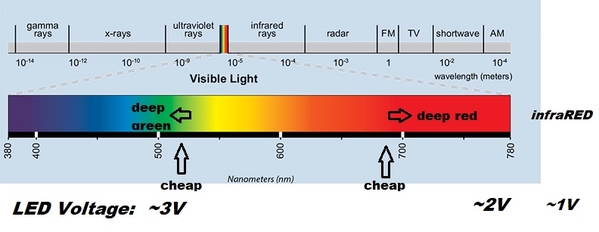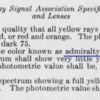...
I am guessing there is some difference in the LEDs we are using that is causing the two different results. I am using a 'bargain basement' (cheapest I could find with the most LEDs) LED assortment from ebay, short leads and all.
Right. In my experience, buying "cheap" Red LEDs verge on being orange as opposed to being "deep red". Likewise, the "cheap" Green LEDs are almost yellow-green as opposed to being "deep green".

Without delving into semiconductor physics and such, note that the typical operating LED voltage varies with color. Cheap red and green LEDs will have operating voltages closer together than Deep red and Deep green LEDs. And in the circuit you guys are using, the function of D3 and D4 is to separate the operating voltages of Red and Green. Hence, it could be that Rod is using darker LEDs that already start with a wider voltage separation and hence do not need the 2nd diode.
For the prototypical sticklers for detail, you can actually look up the FRS specification for the wavelength effectively specified in nanometers (nm) for Red and Green signals. Some might find the following clip from 100 years ago amusing. Given the technology of the day, rather than specifying in terms of nM wavelength as you might find today, note the definition of Green talks of a hint of "blue" meaning to the left of the spectrum as shown above. In other words a deep green!

If you shop around, you will find interesting names for colors of LEDs such as "Emerald Green", "Pure Green", and so on. Very few hobbyists, if any, can afford an optical spectrometer that can measure the wavelength of an LED.








